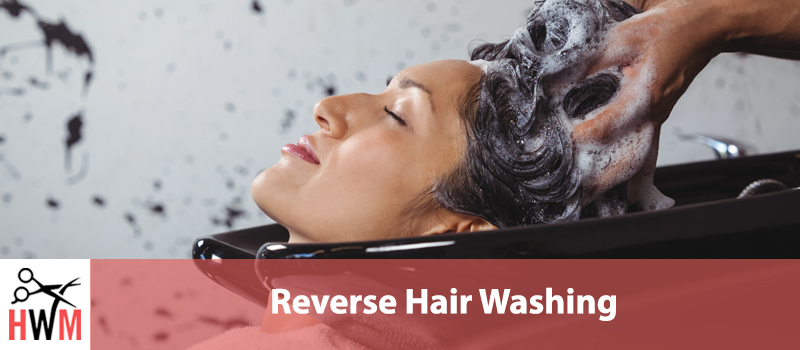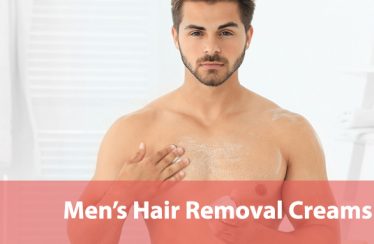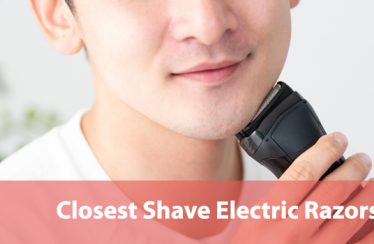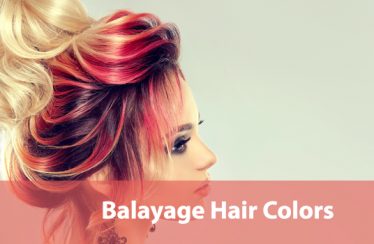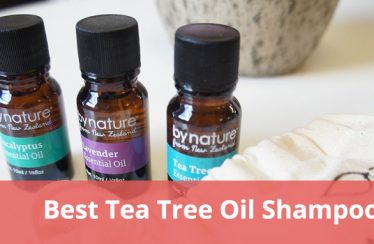Washing your hair every day is drying and damaging. Add in heat-styling techniques, heavy styling products, and harsh brushing, and you have a recipe for brittle damaged hair.
But going without washing your hair can leave it looking limp and greasy. We don’t all need to be going for the Professor Snape of hairstyles.
It may seem like you have no options other than to go back and forth between vibrant hair with tons of volume and shape, but brittle ends and rough texture, or limp greasy hair that feels great but looks blah.
Many of us have balanced the two by letting our hair rest and re-hydrate over the weekend while we indulge in styling to our heart’s content through the week.
Fortunately, as more and more people experiment with new ways to care for your hair, there are better options. You don’t need to get stuck in the same old cycle.
Reverse hair washing is a new way to care for your hair. Even better, reverse hair washing has benefits for all hair types.
- What Is Reverse Hair Washing?
- Why Does Reverse Hair Washing Make A Difference?
- Who Can Effectively Use Reverse Hair Washing?
- How to Reverse Wash Your Hair
- What Kinds of Conditioner Can You Use for Reverse Hair Washing?
What Is Reverse Hair Washing?
Reverse hair washing isn’t washing the tips of your hair before the roots or moving from the back of your head to the front. Don’t worry, we wondered the same thing when we first heard the name.
To reverse wash your hair you simply apply a conditioner treatment before you shampoo instead of after.
Conditioners, no matter what type of conditioner you use, are designed to replace the natural oils that are washed away by the cleansing action of your shampoo.
Cleansing is a good thing, and important for your hair and scalp health. But a thorough cleanse also leaves your hair unprotected. It’s easier to damage freshly washed hair. It takes time for the natural oils in your scalp to spread through your hair and restore that protection.
Traditional conditioner works by restoring some oils and protective barriers to your hair shaft. They help smooth down the irritated cuticle of your hair. Conditioner tries to replace your natural oils. It’s less effective, but it does help preserve your hair.
Usually, you condition after you wash your hair, specifically after you cleanse your hair. Reverse hair washing changes that dynamic, but it’s more effective than conditioning after you wash your hair.
Why Does Reverse Hair Washing Make A Difference?
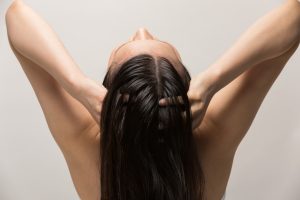
It may seem counter-intuitive to reverse your hair washing process since conditioner is designed to help protect your hair after you’ve cleansed.
But it does make a difference.
Instead of using the conditioner to replace your natural oils, reverse hair washing helps you get a cleansing wash while still keeping some of those natural oils on your hair.
Instead of creating a protective barrier between your hair and drying air, harsh styling products, and other damaging conditions, the conditioner forms a protective barrier between your hair and the shampoo.
Most shampoos are still strong enough to get through the conditioner barrier enough to give you a good cleanse. But, with the conditioner in place, they won’t wash away all of the natural oil in your hair.
That means your hair has more protection at the end of your shower. Plus, leaving some oil in your hair can make it easier to shape and style, cutting down on the number of styling tools and products you need to use.
Now, you shouldn’t switch to reverse washing your hair all the time.
Reverse washing gives you a softer, gentler, cleanse, but it’s not quite as thorough as washing your hair normally. We recommend using the reverse washing method no more than half of the time.
So, if you wash your hair 3 times a week, you should reverse wash 1 time the first week, and up to twice the next. If you wash your hair every day, you can just alternate which method you use.
As with any new hair care routine, we recommend that you give reverse washing a try for more than a single wash. Use this method for at least a month to see if it’s making a significant and lasting difference for your hair.
If you aren’t getting quite the results you want, it’s worth changing your hair care routine. Try washing your hair less often, or more often, until you find a balance that works for your hair and skin type.
It’s also worth looking at what products you use. A particularly harsh shampoo may counteract the benefits of reverse hair washing. An ineffective conditioner won’t provide the level of protection and benefit you need for this technique to work.
We’ll talk more about what to look for in your shampoo and conditioner a little further down.
Who Can Effectively Use Reverse Hair Washing?
Reverse hair washing is effective for almost everyone.
Seriously, almost all hair types, lengths, and textures will see benefits from reverse hair washing.
That said, some of the most drastic hair improvements are for people with fine hair that tends to get greasy easily.
The reason this method can be helpful for so many different hair types and textures is that it works with some basic facts about all hair, rather than targeting the specific needs of one type of hair over another.
Your hair also produces oil that protects it better than any replacement. Since reverse hair washing lets your hair keep its natural oils, your hair can benefit from the full benefit of those oils. And since your scalp produces oils specifically for your hair, those benefits are greater than the benefits from any conditioner.
But it’s particularly effective for finer, straight, hair types because the narrow width of your hair shaft is more easily dried and damaged. So, giving this type of hair some additional protection has immediate benefits because it needs the protection significantly more than other hair types.
You can also expect this method to help tight curls, afros, and even the thickest straight hair, since reducing damage and using a little natural oil can help with brushing, styling, and hair management.
How to Reverse Wash Your Hair
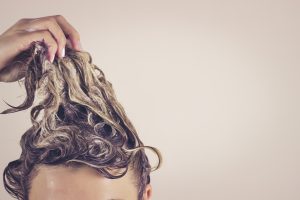
Of course, you need to know how to reverse wash your hair to get the best benefits from this method.
It isn’t very complicated. If you don’t already use hair masks, oil treatments, or other DIY home hair treatments, it’s probably best to start with a store-bought shampoo and conditioner.
Eventually, you’ll probably want to incorporate other hair treatments into your routine. Alternative treatments will help you develop more control over your hair, and will let you learn to treat specific problems, quickly and easily.
For now, go ahead and continue using your current products.
You’ll need to wet your hair down like normal at the start of your shower. Using a normal amount of conditioner, apply it to your hair.
Avoid getting the conditioner all the way to the roots of your hair, but you can apply it close to your scalp.
You should leave it in for at least 3-5 minutes. But, if you usually leave the conditioner in your hair longer, go ahead and do what you usually do.
This is a good opportunity to use body wash and take care of other shower routines since shampooing is now the last step in your shower.
For the last step, wet your hair slightly. You don’t want to rinse all the conditioner out of your hair, a good amount of the product needs to still be there to form a protective barrier. Instead, just wet your hair enough to lather the shampoo easily.
You may also notice needing less shampoo to get a good lather and clean hair. That’s because the conditioner also works to lift and remove some of the dirt and grime. Even though that isn’t the purpose of your conditioner, it does boost the function of your shampoo.
Lather the shampoo as normal, and rinse.
Some people recommend adding a little conditioner into your hair after the final rinse or using a leave-in conditioner after your shower, but while your hair is still wet.
If you’re considering these options, experiment with both using a leave-in conditioner and not. That way you can make an informed decision about which is better for your hair and your styling routine.
What Kinds of Conditioner Can You Use for Reverse Hair Washing?
What conditioner you use can also make a big impact on your overall results. Some people see fantastic results using the same conditioner every time. Others get better results by varying the conditioner they use for specific targeted results.
Even if you aren’t interested in DIY home hair treatments, you should read the next section on store-bought conditioners. That way you’ll know what to look for in a high-quality conditioner.
Store-Bought Conditioner
Store-bought conditioners are probably the easiest conditioning option for reverse washing your hair. They come pre-made and in large quantities. One bottle is enough to last for months, even if you have long hair or very thick hair.
However, they do have some downsides. Store-bought conditioners are formulated as much for shelf-life and stability as they are for conditioning your hair.
Many of them contain ingredients that are known to be drying and irritating for your hair and scalp.
These ingredients are still included because they allow the resulting conditioner to remain shelf-stable for years at a time. Some common ingredients, like propylene glycol, also make the conditioner stable through transit, without having to worry about maintaining a constant temperature during travel.
Ideally, the fewer ingredients included for shelf stability, the better. You want a conditioner that contains natural oils. Coconut oil, jojoba oil, argan oil, and shea butter are all common in conditioners.
Avoid high amounts of propylene glycol, sulfates, and parabens. Parabens are harder to spot than the other two, but most paraben-free conditioners will advertise it on the label.
Sulfates are easy to spot, they usually have 1-3 names followed by sulfate. Try to avoid conditioners that have more 2-3 of these in the ingredient list. You should also look for sulfates to be as far down the ingredient list as possible. You’re off to a good start if you can avoid it in the first 4 ingredients.
Avoiding sodium can also be helpful if you have thin fine hair or sensitive skin. Sodium and salts tend to be added as thickeners, but they are irritating if there is too high a concentration in the formula.
A store-bought conditioner is a good option if you’re looking to start reverse washing your hair without changing your current hair care budget, already have reasonably healthy hair, or just want to try to the routine before committing to making it a normal part of your shower.
Oil Conditioners

Another, all-natural, option for the pre-wash conditioning treatment are natural oils. You may already have some of these oils for cooking or other parts of your hair and skin routine.
All of them offer natural minerals and nutrients important for hair and skin health in addition to natural plant lipids (fats) that coat and hydrate your hair to protect it.
Depending on the length of your hair, and its overall thickness, you may need anywhere from a couple of teaspoons to a couple of tablespoons of oil to thoroughly coat your hair. Either way, you shouldn’t need much, making oil conditioning a reasonably affordable option.
However, oil conditioning usually requires multiple steps, since you’ll want to wet your hair lightly, and then step out of the shower to apply the oil before you resume your normal routine.
Another option is to go the mask route. You can apply the oil to dry, thoroughly brushed, hair, but you may want to leave it in longer. Apply it 10 minutes to half an hour before you want to shower, and then wash it out.
Olive Oil
Olive oil has the dual advantage of being one of the most common household cooking oils and being one of the best oils for your hair.
Olive oil is high in antioxidant vitamin E. Oxidation damage is especially common in surface tissues and rapidly dividing cell types. Both your skin and hair fit those descriptions. Anti-oxidants help your hair and skin cells divide naturally and healthily, in addition to providing some important hydration.
It also has some important anti-inflammatory properties that make olive oil a good option if you have dandruff or other inflammatory conditions. Even if your inflammatory condition doesn’t directly involve your scalp, you may still have a higher than average rate of inflammation in your scalp and hair follicles.
Reducing the inflammation improves the circulation to your hair follicles, along with overall scalp health.
Coconut Oil
Coconut oil is another one that’s easy to get at your local grocery or drug store, but which has significant health benefits when applied properly.
Coconut oil is a closer mimic for your skin’s natural oil, sebum, than olive oil.
It also penetrates a little deeper than most oil conditioners, making it even better for your scalp and hair follicles. Store-bought conditioners have a very low penetration rate unless they are specifically designed to help treat dandruff and other scalp conditions.
Coconut oil also has a reasonably high level of antioxidants, along with other important nutrients that encourage hair growth. Meanwhile, the hydration and protection from coconut oil reduces split ends and breakage.
All of that combines to make coconut oil an ideal option if you’re looking to start growing your hair out, or as a supportive treatment in addition to traditional hair loss treatments.
Argan Oil
Argan oil isn’t as easy to find in stores, except in store-bought hair care products, but some higher-end grocery and beauty stores do carry it. Otherwise, you can order a bottle online.
Argan oil is great for giving your hair an immediate appearance and texture boost. It’s good for most types of hair, mimics your natural oil well, and has a great shine and luster that shows even with a minimal amount of oil in your hair.
Like the other oils on our list, it’s high in vitamin E, antioxidants, and essential fatty acids.
While argan oil is the current baby of the beauty industry, that doesn’t mean you have the spend extra to use it. If argan oil isn’t readily available in your area, feel free to choose from one of the other oils on our list. They should work almost as well.
Jojoba Oil
Jojoba oil benefits from all the properties of the oils on this list, with one major additional perk. Jojoba oil is one of the best mimics for sebum (natural skin oils) available today.
That means it has a deeper penetration than other oils because your skin treats it like its own oil. It’s not quite the same, or quite as good, but it’s pretty close.
Jojoba oil is available at most high-end grocery stores with a beauty section, some drug stores, and a decent variety of specialty beauty stores. Like argan oil, if you can’t find it locally, it’s available online.
However, like argan oil, jojoba oil is a more expensive option than other natural oils.
Others?
This isn’t meant to be an exhaustive list of the natural oils available for hair care. Natural nut oils like almond oil, are also incredibly common and effective. Some oils come pre-mixed with essential oils, herb oils, or other important additives that can boost their effectiveness.
You may even see plain herb and flower oils, like rose and jasmine oils, available. Each has different benefits. Feel free to experiment and mix oils yourself for different scents and benefits.
Hot Oil or Cold?
Well, either.
Hot oil treatments are a mainstay for natural hair, locs, and heavy curls. They get deep into your hair for better hydration, penetrate further into your scalp, encourage circulation, and just generally feel really good.
But hot oil treatments take time, it’s easy to get the oil too hot and cause damage, even if it’s still comfortable on your skin, and heating the oil makes it slicker and harder to handle.
Cold, or room temperature, oil treatments take less time, are usually easier to apply, and work nearly as well.
But, they don’t lift the cuticle of your hair, so they don’t create the same ultra-hydrating effect as a good hot oil treatment.
Which you use is up to you, and you might consider doing a combination so you can treat your hair with an oil pre-wash in a hurry, and spend more time on your hair care routine when you have a bit longer to heat and work with the oil.
Herbal Treatments
You can also mix herbs into an oil or conditioner pre-wash. Common herbs include mints, rosemary, and tea tree since they all have circulatory and anti-inflammatory benefits.
But you can also use herbs like chamomile and lavender for relaxation, cinnamon or clove (in small amounts) for a pleasant warm tingle in your scalp and rose or other flowers for some additional conditioning effectiveness.
Avocado
Another option that spans both a pre-wash conditioning treatment and a hair mask, is applying a mashed avocado paste to your hair.
Like the oil treatments, using avocado will likely take a little longer than using a store-bought conditioner. But you can mix the fruit pulp with a little oil, honey, vinegar, or even your store-bought conditioner, for added effectiveness.
Avocados have a lot of the same properties as natural oils, but they are thicker, can stay on your hair longer, and add more body and volume to your hair than plain oil.
Conclusion
Overall, reverse hair washing treatments are a great way to get a natural boost to your hair all the time.
You’ll know you’ve gotten the right combination of products and routine when you notice that your hair is smoother, shinier, and less frizzy. Plus, you’ll notice that your hair is easier to shape and style holds styling better, grows faster and healthier, and looks as soft as it feels!
If you don’t immediately get the results you’re looking for, don’t panic. It can take time to reverse cuticle damage on your hair. Your scalp likely also needs time to recover from the damage that’s built up over time.
Stick with it for a week or two, and if you still aren’t satisfied, try a different product combination. Or, take a look at your shampoo to make sure it isn’t undoing all the work from the pre-wash hair treatment.
